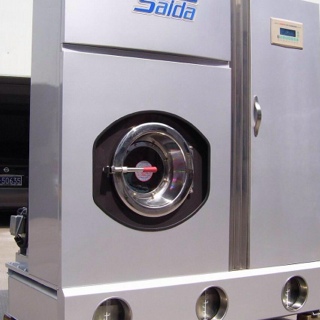Information
-
Client / Site
-
Conducted on
-
Prepared by
-
Inspection type
-
Location
-
Environmental Permitting (England and Wales) Regulations 2010
Dry cleaning PGN 6/46(04) Inspection/Visit Report
Manchester City Council, Growth and Neighbouhoods, Citywide Support Environmental Protection Group
1. Operator details
-
Permit Number
-
Contact on Site
-
Position
-
Copy of permit on site
-
Comments regarding permit
-
Operator knowledge of permit
-
Comments regarding operator knowledge
-
Photographs (if applicable)
2. Staff Training
-
Has the operator received professional training/advice on the 'Solvent Emissions Directive' and how to comply with the permit requirements?
-
Have staff been individually trained in the operation of each dry cleaning machine and control/use of solvents?
-
If 'Yes' has the training been recorded?
-
Do staff know where the manual is for each machine, and is it accessible
-
Comments regarding staff training
-
Photographs (if applicable)
3. Process Controls
-
E.g daily leak tests from areas such as: cage door gasket, filter seals, vapour line, heating coil battery, recovery head, solvent tank sight glass, button trap lid, lint filter, filter dump valve, fresh air dampers, cooling coil battery, solvent pipe flanges, air duct inspection hatch, main bearing seal, fan housing inspection hatch, solvent valves and still doors.
Vapour leaks are best detected during the early stages of the drying cycle.
e.g. Weekly checks of common components: all drying and still thermostats, the sill pressure relief device, for by-passing of the link filter (which may lead to blocking of the drying circuit), button trap is functioning correctly and debris can not pass the trap, level controls in the cage and sill and still doors. -
Can the operator demonstrate that he/she can effectively implement the procedures, checks and maintenance requirements detailed in Section B1.4 of the Permit Application, for each dry cleaning machine?
-
Comments regarding process controls
-
Photographs (if applicable)
4. Monitoring/Recording
-
Weekly solvent inventory available for inspection (includes record of solvent usage, weight of product cleaned, volume of waste sent for recovery/disposal
-
Weekly solvent inventory correctly completed
-
Solvent management balance sheet available for inspection
-
Solvent management sheet correctly completed
-
General maintenance work records available for inspection
-
Testing records available for inspection
-
Repair records available for inspection
-
Product weighing scales check records available for inspection
-
Abnormal emissions recorded (breakdowns/malfunctions) available for inspection
-
Annual solvent start (litres)
-
Annual solvent end (litres)
-
Comments regarding monitoring/records
-
Photographs (if applicable)
5. Solvent storage and handling
a) New Containers
-
Solvents stored in original containers unopened before use
-
Container size appropriate to machine being topped up
-
Stored within adequate impervious/corrosion proof spillage collector
-
Away from excess heat and light, and well ventilated area
-
Comments regarding new containers
-
Photographs (if applicable)
b) Waste Containers
-
Empty solvent containers have lids securely replaced
-
All waste container lids properly secured and labelled as to content
-
Stored on impervious floor/away from drains/away from heat sources and bright light/well ventilated area
-
Comments regarding waste containers
-
Photographs (if applicable)
c) Handling
-
Containers only opened at machine when ready for filling
-
Access to solvents including waste containers only to trained staff
-
Equipment to clean spillages quickly accessible in storage area
-
Comments regarding handling
-
Photographs (if applicable)
6. General Operation - further questions
-
Do you operate the machine full whenever possible?
-
Do you always weight product before loading the machine: to optimise loading/ensure machine is not overloaded
-
Keep the loading door closed at all times other than during loading
-
Are the still, button trap and lint filter doors kept closed before start up, and during the cleaning and drying cycles?
7. Conclusions
-
Risk Score
-
Further action recommended
-
Details of further actions
-
Additional comments/observations arising from the inspection
-
Inspecting Officer
-
Operator














